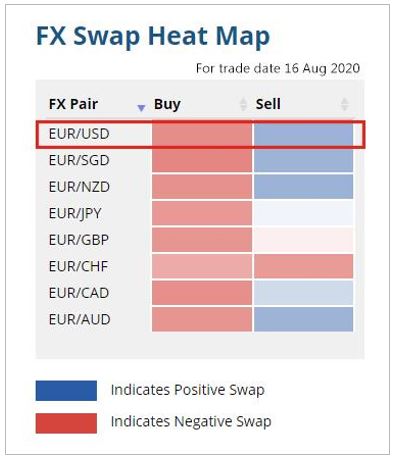
Currency options are derivatives that allow investors to safeguard themselves against the risk of a possible exchange rate change. These options may be purchased using a variety of methods.
A forex broker can be used to trade currency options. The forex broker will assume the risk for the investor, and charge a fee. This is a great way for beginners to get started in the forex market as it allows them to trade in smaller amounts and with minimal risk.
NASDAQ OMX is another way to trade currency. They offer options on Australian dollars, British pounds, Canadian Dollars, Euros, Japanese yens, Swiss francs, and others. These options are cash settled and have a large variety of expiration dates and strike prices to choose from.

You can also buy foreign currency options via a regulated market such as Chicago Mercantile Exchange(CME) or London Stock Exchange. These exchanges provide a wide range of expiration and quoting dates, with standard maturities. They are however not as flexible as the NASDAQ OMX.
Currency options have the main advantage that you can hedge against changes in a currency's value without having to purchase the actual money. The currency options can also be used for speculation in the market. If the price of the foreign currency is above or beneath the strike price, the option will expire worth money.
The way you trade currency options depends on how much capital you have. Others use them to supplement their investment portfolios while some only trade them as pure speculation.
What are currency options?
Trading currency options involves complex instruments and a risk of loss. It is not for everyone. Do your research to understand them before entering into a transaction.

Forex options include futures, options and FX futures. FX swaps, forwards and options can also be traded.
Anybody with an interest is currency trading can trade Forex options. You can use them for both hedging as well as speculative reasons, but it's important to keep in mind that they can be very volatile.
How to trade currency options
The two most basic types are call and puts. A call gives you the right to buy a currency at a certain price for a specific amount of time, while a put gives you the right to sell a currency at a certain price for the same amount of time. The price of the options is determined by a combination between the strike price and current exchange rates.
FAQ
What are the benefits to investing through a mutual funds?
-
Low cost - buying shares directly from a company is expensive. Buying shares through a mutual fund is cheaper.
-
Diversification - most mutual funds contain a variety of different securities. If one type of security drops in value, others will rise.
-
Professional management - professional mangers ensure that the fund only holds securities that are compatible with its objectives.
-
Liquidity - mutual funds offer ready access to cash. You can withdraw your money at any time.
-
Tax efficiency - Mutual funds are tax efficient. So, your capital gains and losses are not a concern until you sell the shares.
-
No transaction costs - no commissions are charged for buying and selling shares.
-
Mutual funds can be used easily - they are very easy to invest. All you need is money and a bank card.
-
Flexibility: You can easily change your holdings without incurring additional charges.
-
Access to information - you can check out what is happening inside the fund and how well it performs.
-
Investment advice – you can ask questions to the fund manager and get their answers.
-
Security - You know exactly what type of security you have.
-
Control - you can control the way the fund makes its investment decisions.
-
Portfolio tracking - You can track the performance over time of your portfolio.
-
Easy withdrawal - You can withdraw money from the fund quickly.
There are some disadvantages to investing in mutual funds
-
There is limited investment choice in mutual funds.
-
High expense ratio - the expenses associated with owning a share of a mutual fund include brokerage charges, administrative fees, and operating expenses. These expenses eat into your returns.
-
Lack of liquidity-Many mutual funds refuse to accept deposits. They can only be bought with cash. This limit the amount of money that you can invest.
-
Poor customer service: There is no single point of contact for mutual fund customers who have problems. Instead, you should deal with brokers and administrators, as well as the salespeople.
-
Ridiculous - If the fund is insolvent, you may lose everything.
What is a bond?
A bond agreement between 2 parties that involves money changing hands in exchange for goods or service. It is also known as a contract.
A bond is normally written on paper and signed by both the parties. This document details the date, amount owed, interest rates, and other pertinent information.
The bond can be used when there are risks, such if a company fails or someone violates a promise.
Bonds can often be combined with other loans such as mortgages. This means the borrower must repay the loan as well as any interest.
Bonds can also help raise money for major projects, such as the construction of roads and bridges or hospitals.
When a bond matures, it becomes due. The bond owner is entitled to the principal plus any interest.
If a bond isn't paid back, the lender will lose its money.
What is a Stock Exchange and How Does It Work?
Companies sell shares of their company on a stock market. This allows investors and others to buy shares in the company. The market sets the price for a share. It is usually based on how much people are willing to pay for the company.
Stock exchanges also help companies raise money from investors. Investors give money to help companies grow. They do this by buying shares in the company. Companies use their money as capital to expand and fund their businesses.
A stock exchange can have many different types of shares. Others are known as ordinary shares. These are the most popular type of shares. These shares can be bought and sold on the open market. Shares are traded at prices determined by supply and demand.
Preferred shares and bonds are two types of shares. Preferred shares are given priority over other shares when dividends are paid. The bonds issued by the company are called debt securities and must be repaid.
How are share prices established?
Investors who seek a return for their investments set the share price. They want to earn money for the company. They then buy shares at a specified price. Investors will earn more if the share prices rise. The investor loses money if the share prices fall.
The main aim of an investor is to make as much money as possible. This is why investors invest in businesses. They can make lots of money.
Statistics
- The S&P 500 has grown about 10.5% per year since its establishment in the 1920s. (investopedia.com)
- Individuals with very limited financial experience are either terrified by horror stories of average investors losing 50% of their portfolio value or are beguiled by "hot tips" that bear the promise of huge rewards but seldom pay off. (investopedia.com)
- Our focus on Main Street investors reflects the fact that American households own $38 trillion worth of equities, more than 59 percent of the U.S. equity market either directly or indirectly through mutual funds, retirement accounts, and other investments. (sec.gov)
- For instance, an individual or entity that owns 100,000 shares of a company with one million outstanding shares would have a 10% ownership stake. (investopedia.com)
External Links
How To
How to Open a Trading Account
Opening a brokerage account is the first step. There are many brokers on the market, all offering different services. Some brokers charge fees while some do not. Etrade, TD Ameritrade and Schwab are the most popular brokerages. Scottrade, Interactive Brokers, and Fidelity are also very popular.
Once your account has been opened, you will need to choose which type of account to open. These are the options you should choose:
-
Individual Retirement Accounts (IRAs)
-
Roth Individual Retirement Accounts (RIRAs)
-
401(k)s
-
403(b)s
-
SIMPLE IRAs
-
SEP IRAs
-
SIMPLE SIMPLE401(k)s
Each option offers different advantages. IRA accounts have tax benefits but require more paperwork. Roth IRAs give investors the ability to deduct contributions from taxable income, but they cannot be used for withdrawals. SIMPLE IRAs have SEP IRAs. However, they can also be funded by employer matching dollars. SIMPLE IRAs have a simple setup and are easy to maintain. They enable employees to contribute before taxes and allow employers to match their contributions.
Next, decide how much money to invest. This is the initial deposit. Most brokers will offer you a range deposit options based on your return expectations. You might receive $5,000-$10,000 depending upon your return rate. The lower end represents a conservative approach while the higher end represents a risky strategy.
You must decide what type of account to open. Next, you must decide how much money you wish to invest. Each broker has minimum amounts that you must invest. These minimum amounts vary from broker-to-broker, so be sure to verify with each broker.
You must decide what type of account you want and how much you want to invest. Next, you need to select a broker. Before selecting a broker to represent you, it is important that you consider the following factors:
-
Fees – Make sure the fee structure is clear and affordable. Many brokers will offer rebates or free trades as a way to hide their fees. However, some brokers raise their fees after you place your first order. Avoid any broker that tries to get you to pay extra fees.
-
Customer service – Look for customer service representatives that are knowledgeable about the products they sell and can answer your questions quickly.
-
Security - Look for a broker who offers security features like multi-signature technology or two-factor authentication.
-
Mobile apps: Check to see whether the broker offers mobile applications that allow you access your portfolio via your smartphone.
-
Social media presence - Check to see if they have a active social media account. It might be time for them to leave if they don't.
-
Technology - Does this broker use the most cutting-edge technology available? Is it easy to use the trading platform? Are there any issues when using the platform?
After you have chosen a broker, sign up for an account. While some brokers offer free trial, others will charge a small fee. After signing up you will need confirmation of your email address. Next, you'll need to confirm your email address, phone number, and password. You will then need to prove your identity.
Once verified, you'll start receiving emails form your brokerage firm. You should carefully read the emails as they contain important information regarding your account. The emails will tell you which assets you are allowed to buy or sell, the types and associated fees. Also, keep track of any special promotions that your broker sends out. You might be eligible for contests, referral bonuses, or even free trades.
Next, open an online account. An online account can usually be opened through a third party website such as TradeStation, Interactive Brokers, or any other similar site. These websites are excellent resources for beginners. When you open an account, you will usually need to provide your full address, telephone number, email address, as well as other information. After this information has been submitted, you will be given an activation number. Use this code to log onto your account and complete the process.
After opening an account, it's time to invest!